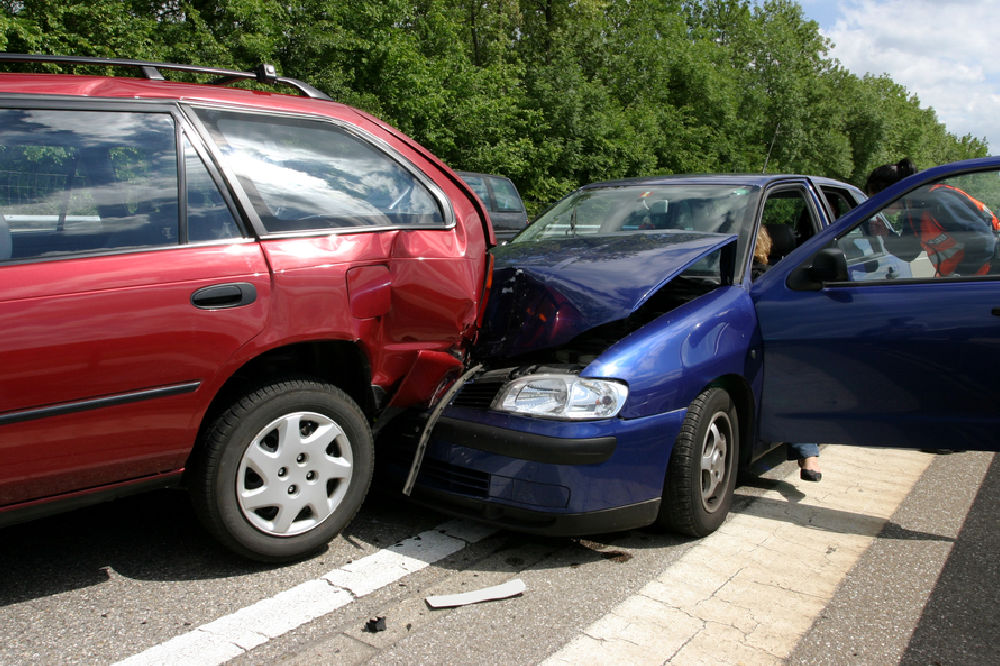Changing lanes is a basic concept for most drivers as it’s often something they do every day while driving without giving it much thought. However, lane change accidents are a common occurrence for this very reason. When drivers get used to doing something over and over again, they tend to put less effort or awareness into the action. Unfortunately, inattention and a lack of precaution when changing lanes can easily contribute to car accident.
In Indiana alone, there were over 5,000 collisions reported in 2019 as a result of improper lane usage. While this can account for various maneuvers, it most often refers to drivers who were not paying attention or following right-of-way laws while changing lanes. While lane change accidents at low speeds may only result in minor damage, if these accidents occur when one or more of the vehicles involved are driving fast, it can result in serious damage and injuries.
If you or a loved one are involved in a lane change accident, the personal injury attorneys at the Crossen Law Firm can assist you. We have years of experience helping victims of car accidents and are dedicated to helping our clients recover damages to ensure they get the compensation they deserve.
How Do Lane Change Accidents Occur?
In most cases, lane change accidents are the result of driver negligence, but negligence is a term used to describe a broad scope of actions.
These actions can include:
- Failure to yield the right-of-way
- Failure to check side and rear-view mirrors before merging
- Failure to use a turn signal when entering another lane
- Misjudging the amount of space between cars or the amount of time available to safely maneuver into another lane
- Failure to check blind spots before merging
- Cutting another vehicle off
- Swerving unexpectedly into another lane
Lane change accidents can also happen for various other reasons, such as:
- Speeding
- Aggressive driving
- Distracted driving
- Fatigue
- Driving while under the influence of drugs or alcohol
- Driving while drowsy from prescription medication
Who Is At Fault in Lane Changing Accidents?
All drivers owe other drivers on the road a duty of care. This means that no matter what the law is, all drivers must operate their vehicles with care so as not to harm others. However, where lane change accidents are concerned, the guilty driver is most often the one who is attempting to merge into another lane for the various reasons indicated above.
When a driver merges with another lane or changes lanes, they must yield the right-of-way to all oncoming traffic. If they merge or maneuver into a new lane before it is safe to do so, they can be held liable for causing the accident if one occurs. However, the fault of both drivers is typically taken into account, meaning authorities will review the accident report to determine if the merging driving, as well as any other drivers involved, were acting negligently.
If another driver who was not merging or changing lanes is found to have acted negligently, they could share in the blame or be the one who is entirely at fault. Actions that could prove the other driver was responsible or shared some of the blame include:
- Speeding up to purposely prevent the other driver from merging or changing lanes.
- Tailgating to limit space and prevent another driver from merging in front of them.
- Slowing down to block the path of another driver trying to merge or change lanes.
- Brake checking or driving in any other aggressive manner to purposely mess with and aggravate another driver trying to merge or change lanes.
How is Liability Determined After a Lane Change Accident?
When an accident claim is filed, police reports and other evidence will be reviewed to determine who was at fault. Evidence gathered for this purpose can include information from the police reports, video surveillance from the accident scene, photos of the accident scene, eye witness statements, driver testimonies, and accident reconstruction diagrams and models.
Once fault is determined, the guilty party’s insurance company will be responsible for paying damages to the victim. However, as Indiana is a comparative fault state, the amount received will depend on the percentage of fault. In comparative fault states, it is possible for more than one party to be held liable. So, for example, if you file a claim but are found to be 20% percent at fault and the other driver is 80%, the compensation you receive will be reduced based on your percentage of fault. And so long as you are no more than 50% at fault, you can still file a claim and recover damages.
Consult an Indianapolis Personal Injury Lawyer
If you are the victim of a lane-changing accident, our team of experienced personal injury attorneys can help. Proving fault in these kinds of accidents can sometimes be a challenge, which is why it is necessary to have an attorney on your side advocating for your rights. At Crossen Law Firm, we know what it takes to gather the necessary evidence to prove that the other party is liable.
To schedule a free consultation with one of our attorneys, call (317) 401-8626 today, or contact us online.

 317-401-8626
317-401-8626 
.jpg)